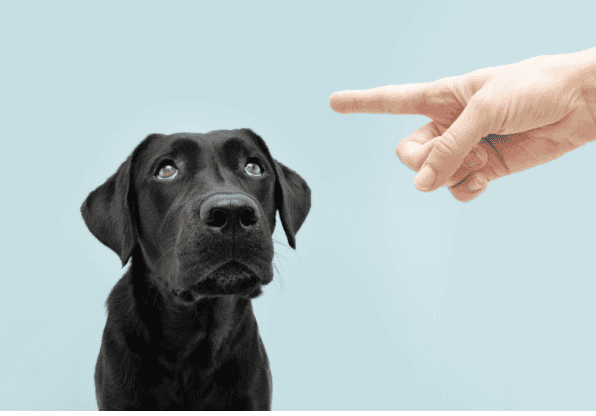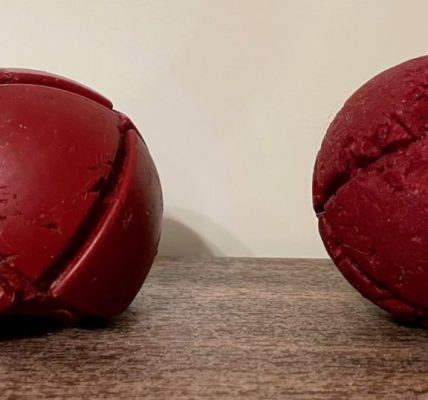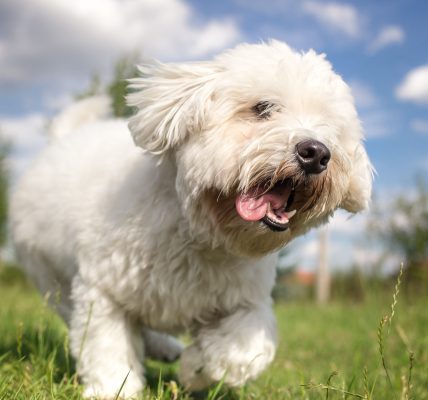Some adolescent dogs become much more assertive in behavior and become a little more difficult to manage when they hit bout the eight month point. I always warn people that puppies go through an “adolescent phase” somewhere between 8- 18 months old. At those periods a time it becomes necessary to review all of your past training and reinforce it. Maybe a little more assertively.
What we’re not prepared for sometimes is the assaults on visitors legs… Or your own (I have my own story on this!). Of course your male dog knows there’s no female dogs, so why does he try to hump human people? To you, your human leg looks like a human leg, but to your adolescent dog, it’s an opportunity to reinforce his status in the world. (Marking??) And let me get rid of one thing right at the get-go that I’ve been telling people for the last four decades, about humping. Both males and females do it. So buying a female will not ensure that she will not hump because I had females and have them now (many breeds through the years) and they hump each other, and males, and it is a domination type of behavior and you can even see them do it during play.
Just as I warned, as a breeder, she/he may be a teenager, and the hormones may be running high. Despite appearances, however, this sort of mounting isn’t sexual behavior, even your hormone crazed pet knows a difference between a receptive female and a human leg… In fact, it’s not even exclusively, male behavior, like I’ve said. They are trying to impress those around them with their ranking status. It can be embarrassing and with some dogs, it seems to become obsessive, as in mounting pillows and not just human legs. But this is very rare and I’ve never owned or known a dog like this, but I know they’re out there. When it becomes incessant, call a therapist–I’ve never in 4 decades had to do this with a Labrador–but there will be a “first” I’m sure. LOL.
Getting on top of things… Literally… Climbing for rank, is natural in dogs. Even as tiny puppies, they will wrestle and climb on top of each other, and I even see puppies humping each other in the whelping box. Sometimes this behavior is just one raising his paw over another ones back, which is very common. If you wanna put a stop to this jockeying for position, you’ll probably find it more effective to create a diversion rather than simply yelling. Say “HEY!!!”sharply, then, as soon as you’ve got your dog’s attention, offer a toy, or put him through a short routine, like “sit, stay and– treat!” Anything to distract him from his own humping preoccupation. Repeat this. Usually this curbs it in the first week of puppyhood–IF you even see it. Sometimes they will do it briefly with a child, once, to establish pecking order, but it is not usual, nor have I seen it but once.
And no, neutering and spaying will not correct it. I have had smaller dogs in my past that were neutered or spayed who still did this. Not incessantly at all, but it just taught me that many people neuter and spay for this natural behavior! They don’t need to if they use the proper training, allowing the dog to have all of its full hormones so that it can grow to its full stature, and so its growth plates can close (and not become incontinent, or shed incessantly and CONSTANTLY, which is a result of neuter/spay). shhhh…but most problems in dogs begin with a spay/neuter–so never rush to that. For more info, see my blog on nuetering and spaying.
Or watch our Youtube video about nuetering and spaying HERE
The best way to get through the canine teenage stage is with plenty of positive reinforcement for the behavior you DO want, and quick, sharp distractions from behavior you don’t. That way you’re ensuring that your dog will remain excited to interact with you, because you make things interesting and fun, rather than simply stopping him from doing what he wants. Brilliant!!!! (unfortunately I can’t take credit for the training part–I learn from professional dog trainers! And experience.)

 (Graphic by Spruce Pets)
(Graphic by Spruce Pets)
 (added this just for a laugh)
(added this just for a laugh)






